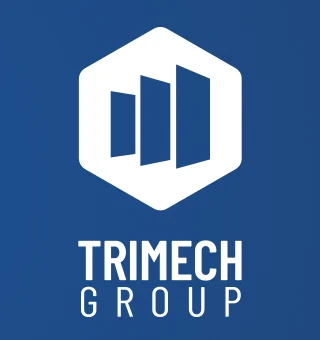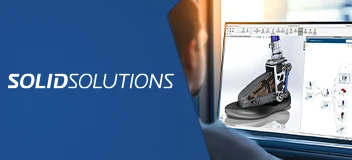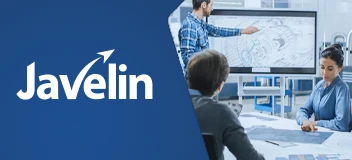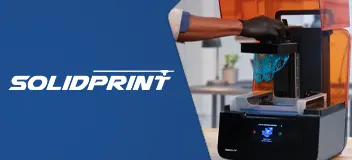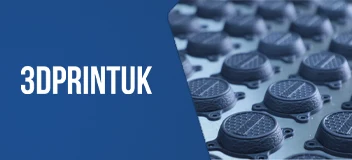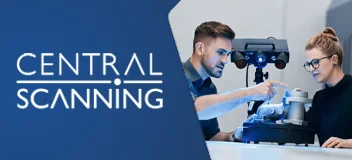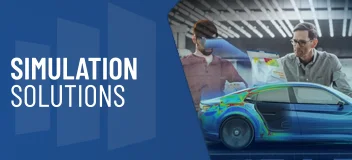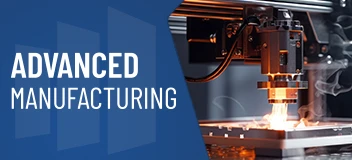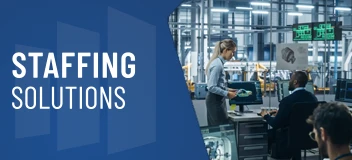SOLIDWORKS Motion Overview
Designed to help you become productive quickly with SOLIDWORKS Motion. This course will teach you how to use the SOLIDWORKS Motion to study the kinematics and dynamic behavior of your SOLIDWORKS assembly models.
The course provides both essential and advanced sessions on the basics of building, simulating and refining a mechanical design system, from suspension steering system and drive shafts to backhoes, CAMS, gears, and actuators.
This training course will help you to:
- Use SOLIDWORKS Motion to perform motion analysis on your designs.
- Size motors/actuators, determine power consumption, layout linkages, develop cams, understand gear drives, size springs/dampers, and determine how contacting parts behave.
Who should attend:
This course has been designed for new SOLIDWORKS Motion users who would like to learn to perform motion analysis on their designs. The course provides an in-depth session on the basics of building, simulating and refining a mechanical design system.
SOLIDWORKS Motion Training Course Requirements & Benefits
Understand the course requirements and the skills you will acquire after completing the SOLIDWORKS course
SOLIDWORKS Motion Lessons
The following lessons are included in the course
Introduction
- About This Course
- Prerequisites
- Course Design Philosophy
- Using this Book
- Laboratory Exercises
- Training Files
- Windows®
- Conventions Used in this Book
- Use of Colour
- More SOLIDWORKS Training Resources
- Local User Groups
- What is SOLIDWORKS Motion?
- What is Motion Simulation?
- Understanding Basics
- Mass and Inertia
- Degrees-of- Freedom
- Constraining Degrees-of- Freedom
- Motion analysis
- How is motion analyzed on the computer?
- Basics of Mechanism Setup in SOLIDWORKS Motion
- Rigid Body
- Fixed Parts
- Floating Parts
- Mates
- Motors
- Gravity
- Constraint Mapping Concept
- Forces
- Summary
Lesson 1: Introduction to Motion Simulation and Forces
- Objectives
- Basic Motion Analysis
- Case Study: Car Jack Analysis
- Problem Description
- Stages in the Process
- Driving Motion
- Gravity
- Forces
- Understanding Forces
- Applied Forces
- Force Definition
- Force Direction
- Case 1
- Case 2
- Case 3
- Results
- Plot Categories
- Sub-Categories
- Resizing Plots
- Exercise 1: D Fourbar Linkage
Lesson 2: Building a Motion Model and Post-processing
- Objectives
- Creating Local Mates
- Case Study: Crank Slider Analysis
- Problem Description
- Stages in the Process
- Mates
- Concentric Mate
- Hinge Mate
- Point-to-Point Coincident Mate
- Lock Mate
- Two Face-to-Face Coincident Mates
- Universal Mate
- Screw Mate
- Point-on-Axis Coincident Mate
- Parallel Mate
- Perpendicular Mate
- Local Mates
- Function Builder
- Importing Data Points
- Power
- Alternative Units
- Plotting Kinematic Results
- Absolute vs Relative values
- Output coordinate system
- Angular Displacement Plots
- Angular Velocity and Acceleration Plots
- Summary
- Exercise 2: Piston
- Exercise 3: Trace Path
Lesson 3: Introduction to Contacts, Springs and Dampers
- Objectives
- Contact and Friction
- Case Study: Catapult
- Problem Description
- Stages in the Process
- Interference Detection
- Contact
- Contact groups
- Contact Friction
- Translational Spring
- Magnitude of Spring Force
- Translational Damper
- Post-processing
- Analysis with Friction (Optional)
- Summary
- Exercise 4: The Bug
- Exercise 5: Door Closer
Lesson 4: Advanced Contact
- Objectives
- Contact Forces
- Case Study: Latching Assembly
- Problem Description
- Fixing Motion with Motors
- Motor Input and Force Input Types
- Functional Expressions
- Force Functions
- STEP Function
- Contact: Solid Bodies
- Poisson Model (Restitution Coefficient)
- Impact Force Model
- Closing Remarks
- Geometrical Description of Contacts
- Integrators
- GSTIFF
- WSTIFF
- SI
- Instability Points
- Modifying Result Plots
- Closing Force
- Summary
- Discussion: References
- Exercise 6: Hatchback
- Exercise 7: Conveyor Belt (No Friction)
- Path Mate Motor
- Exercise 8: Conveyor Belt (With Friction)
Lesson 5: Curve to Curve Contact
- Objectives
- Contact Forces
- Case Study: Geneva Mechanism
- Problem Description
- Curve to Curve Contact
- Solid bodies vs curve to curve contact
- Solid Bodies Contact Solution
- Summary
- Exercise 9: Conveyor Belt (Curve to curve contact with friction)
Lesson 6: CAM Synthesis Objectives
- CAMs
- Case Study: CAM Synthesis
- Problem Description
- Stages in the Process
- Generating a CAM Profile
- Trace Path
- Exporting Trace Path Curves
- Cycle based motion
- Exercise 10: Desmodromic CAM
- Exercise 11: Rocker CAM Profile
Lesson 7: Motion Optimization Objectives
- Motion Optimization
- Case Study: Medical examination chair
- Problem Description
- Stages in the Process
- Sensors
- Design Studies
- Parameters
- Optimization Analysis
- Global Variables
- Important!
Lesson 8: Flexible Joints
- Objectives
- Flexible Joints
- Case Study: System with Rigid Joints
- Problem Description
- Stages in the Process
- Calculation of Wheel Input Motion
- Understanding Toe Angles
- System with Flexible Joints
- Summary
- References
Lesson 9: Redundancies Objectives
- Redundancies
- What are redundancies?
- Effects of Redundancies
- How are redundancies removed in the solver?
- Case Study: Door Hinges
- Problem Description
- Degrees of Freedom Calculation
- Total Actual and Estimated DOF
- Using Flexible Joints Option to Remove Redundancies
- Limitations of Flexible Mates
- Bushing Properties
- How to Check For Redundancies
- Typical Redundant Mechanisms
- Dual Actuators Driving a Part
- Parallel Linkages
- Summary
- Exercise 12: Dynamic Systems
- Exercise 13: Dynamic Systems
- Exercise 14: Kinematic Mechanism
- Exercise 15: Zero Redundancy Model-Part
- Exercise 16: Zero Redundancy Model-Part (Optional)
- Exercise 17: Removing Redundancies with Bushings
- Exercise 18: Catapult
Lesson 10: Export to FEA Objectives
- Exporting Results
- Case Study: Drive Shaft
- Project Description
- Stages in the Process
- FEA Export
- Load Bearing Faces
- Mate location
- Export of Loads
- SOLIDWORKS Simulation Users Only
- Direct Solution in SOLIDWORKS Motion
- Summary
- Exercise 19: Export to FEA
Lesson 11: Event Based Simulation Objectives
- Event Based Simulation
- Case Study: Sorting Device
- Problem Description
- Servo motors
- Sensors
- Task
- Summary
Lesson 12: Design Project (Optional)
- Objectives
- Design Project
- Case Study: Surgical Shear - Part
- Problem Description
- Force to Cut the Catheter
- Self Guided Problem - Part
- Stages in the Process
- Self Guided Problem - Part
- Stages in the Process
- Problem Solution - Part
- Creating the Force Function
- Force to Cut the Catheter
- Creating the Force Expression
- Force Expression
- IF Statement
- Developing the Expression
- Case Study: Surgical Shear - Part
- Stages in the Process
- Summary
Appendix A: Motion Study Convergence Solutions and Advanced Options
- Convergence
- Accuracy
- Integrator Type
- GSTIFF
- WSTIFF
- Stabilized Index Two (SI)
- Integrator Settings
- Maximum Iterations
- Initial Integrator Step Size
- Minimum Integrator Step Size
- Maximum Integrator Step Size
- Jacobian Re-evaluation
- Conclusion
Appendix B: Mate Friction
- Mate Friction
- Concentric (Spherical) Mate Friction Model
- Coincident Translational Mate Friction Model
- Concentric Mate Friction Model
- Coincident Mate (Planar) Friction Model
- Universal Joint Friction Model
- Friction Results Reported
Training Methods
Choose the training method right for you

Group/Public Training
Receive training as a group (limited amount per class) from certified instructors using vendor approved training content and methodologies.
Training is delivered either live online or in a traditional classroom environment.
Advantages
- Cost effective training method.
- More effective than video based training, with videos learners are often not as focused on the training and skip exercises.
- Learn more through group questions and feedback.

Private Training
This style of flexible training is perfect for teams or individuals who are faced with a specific challenge and require personalized courses with on-the-job coaching.
Training is available live online, in-person classroom or onsite at your location.
Advantages
- Use our state-of-the-art mobile classroom at your facility.
- Bring your team up to a consistent level of knowledge by having them take the same training at the same time.
- Benefit from flexible scheduling options.
Upcoming Training Courses
Choose a scheduled SOLIDWORKS Motion course
Are you using SOLIDWORKS to its full potential?
Enhance your skills and capabilities with a SOLIDWORKS Training Assessment from TriMech.
